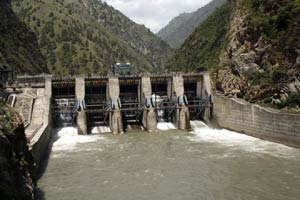The continuing slide comes despite the NDA government’s stated resolve to increase the share of renewables in the country’s overall energy mix, something that is focussed overwhelmingly on solar. According to government’s data updated till April 2015, there are at least 21 hydro power projects that are facing time overruns of five or more years, with those hanging fire for over 10 years. In March, during the first half of the Budget session, power, coal and renewables minister Piyush Goyal admitted in the Lok Sabha that uncertainties in the hydropower sector were keeping investors away, despite the huge potential. “Investors are not ready to make investments,” he said, while extending an assurance that the government would make efforts to start hydel projects once the “uncertainty” is over.
Untapped hydro potential
India ranks fifth in the world in terms of usable hydroelectric potential, with an estimated potential of 148 GW (1 GW is equal to 1,000 MW), making it one of the most important potential sources to meet the energy security needs. India has around 41,000 MW of installed hydropower capacity while an additional 13,000 MW is under construction.
This puts the total capacity that has been tapped at around 33 per cent of the potential. Countries such as Canada and Brazil had harnessed around 69 and 48 per cent of the economically feasible potential back in 2009. Closer home, Sri Lanka has harnessed a whopping 96 per cent of its hydro potential. From a regional perspective, over 93 per cent of the total potential in the north eastern region is yet to be tapped, primarily in parts of the Brahmaputra river basin. However, issues in implementation of such policy initiatives and regulations still plague the sector resulting in the declining share of hydropower in India’s energy mix since 1966.
The skewed development pattern between different generation technologies is evident from the fact that the current portfolio of installed capacity of 267 GW is dominated by thermal power with around 68 per cent share (which has an energy contribution of well over 80 per cent as most of these thermal units are base load stations).






